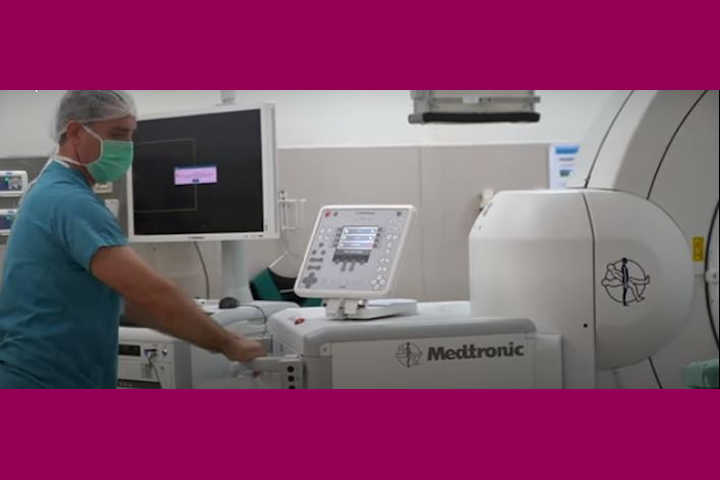In recent weeks, Rambam Health Care Campus has seen a reduction in the number of coronavirus patients, and the beginning of a return to the normal routines and rhythms of hospital life. Rambam’s clinics are again filled with patients, the surgical suites are returning to full operation, and there are exciting new developments, especially in the performance of spinal column surgeries.
 A doctor using the O-arm machine. Photography: Rambam HCC.
A doctor using the O-arm machine. Photography: Rambam HCC.
The Spinal Column Unit of the Orthopedic Surgery Section at Rambam recently received the most advanced imaging machine of its kind, a next-generation O-arm that allows surgical teams to acquire precise three-dimensional images that dramatically improve their ability to perform delicate and complex spinal column surgeries. Given that there are many fears among the public about spinal column surgery, the arrival of a device that improves the ability of surgeons to do their work is welcome news.
The O-arm is a portable medical imaging device resembling a large ring that encircles the patient undergoing surgery. Sensors are applied to the patient’s body and images of their spinal column are acquired before beginning the procedure. The device is then removed from the room, and surgery can begin. Within that brief time, the images are transferred to a computer that converts them into three-dimensional images, similar to those of a CT Scan, but without the extended exposure time to radiation.
As surgery begins, the images—together with triangulated data transmitted from the sensors—provide the surgeon with real-time data on the location of the surgical instruments, enabling more accurate access to the patient’s spinal column and placement of the vertebral fixator device used for spinal fixation surgery. This facilitates far greater precision than ever before possible. Computer-assisted navigation of spinal cord surgeries dramatically increases the precision and effectiveness of surgical interventions, reduces the need for future invasive procedures to correct unsuccessful operations, frees up valuable surgical staff time, and increases the availability of surgical facilities for other patients requiring care.
The Spinal Column Unit in the Orthopedic Surgery Section is the first to benefit from this extraordinary device, but it will also be available to serve other surgical units. The Ear, Nose and Throat and Head and Neck Surgery Department as well as the Department of Oral and Maxillofacial Surgery all require great surgical precision. The new O-arm will allow these surgeons to provide their patients with more effective treatment and an improved quality of life following surgery.
The more surgeons use the device, the more they learn about its usefulness and effectiveness. “The surgeon’s precision is greatly enhanced because of the ability to “see” where we are operating,” declared Dr. Ori Keynan, Director of the Spine Surgery Unit. “With this new device, we are able to perform our operations in the most precise, effective manner possible.”

